If you have been involved in large academic or industrial engineering projects, you are probably familiar with CFD simulation. Moreover, if you have ever tried to learn CFD, you are definitely familiar with ANSYS Fluent. But what is ANSYS Fluent exactly? In simple words, ANSYS Fluent software is the world’s most popular computational fluid dynamics (CFD) program. Engineers and scientists use this fluent CFD software to simulate how liquids and gases flow around objects.
Contents
ToggleThink of ANSYS Fluent as a virtual laboratory. Instead of building expensive physical models and testing them in wind tunnels or water tanks, engineers can use fluent software to predict fluid behavior on their computers. This powerful ANSYS Fluent CFD tool helps solve complex problems like how air flows over an airplane wing, how blood flows through arteries, or how heat spreads in electronic devices.
Furthermore, ANSYS Fluent is not just any CFD simulation software. It is part of the larger ANSYS suite, which means it works seamlessly with other ANSYS tools. The fluent program uses advanced mathematical equations, called Navier-Stokes equations, to calculate fluid motion. However, you don’t need to be a math expert to use ANSYS Fluent because the software handles these complex calculations automatically.
In this comprehensive guide, we will explore Fluent’s features, review its history, and explain what can be done with this powerful CFD simulation software. Additionally, we will compare ANSYS Fluent vs CFX, ANSYS Fluent vs OpenFOAM, and other ANSYS Fluent alternatives. We’ll also cover practical topics like ANSYS Fluent system requirements, ANSYS Fluent pricing, and how to access ANSYS Fluent free download options. Finally, you will understand why ANSYS Fluent remains the top choice for engineers worldwide and learn about ANSYS Fluent tutorial resources to get started, including the ANSYS Fluent student version.

Figure 1: ANSYS Fluent offers FREE version tailored for students worldwide
History of ANSYS Fluent
ANSYS Fluent has a fascinating history that spans over four decades. The fluent software journey began in 1980 when Fluent Inc. launched one of the world’s first commercial CFD programs. In simple terms, this was revolutionary because engineers could finally use computers to simulate fluid flow instead of expensive physical experiments.
The big turning point came in 2006 when ANSYS acquired Fluent Inc. for $1.8 billion. Why was this important? Because ANSYS Fluent became part of a bigger family of engineering tools. As a result, the fluent CFD software gained powerful new features and better integration with other simulation tools.
Since then, ANSYS Fluent has continued to evolve. The latest version, ANSYS Fluent 2024, includes exciting features like:
- GPU acceleration for faster simulations
- Enhanced turbulence models for better accuracy
- Improved meshing capabilities
- Advanced multiphase flow modeling
- Better parallel processing support
Today, ANSYS Fluent software is used by over 96% of the world’s top 100 industrial companies. Moreover, it remains the industry standard for CFD simulation, helping engineers solve complex problems faster and more accurately than ever before.
Key Features of ANSYS Fluent
What makes ANSYS Fluent so powerful? Let’s explore the ANSYS Fluent features that make it the preferred CFD simulation software for engineers worldwide.
Advanced Solver Capabilities
First and foremost, the ANSYS Fluent solver is incredibly versatile. In simple words, it can handle almost any fluid flow problem you can imagine. The fluent software offers:
- Pressure-based and density-based solvers
- Steady-state and transient simulations
- Compressible and incompressible flows
- Laminar and turbulent flow modeling
Meshing Excellence
Moreover, ANSYS Fluent meshing tools are exceptional. The fluent program includes automatic mesh generation that saves hours of manual work. Additionally, the software supports:
- Structured and unstructured meshes
- Polyhedral mesh technology for better accuracy
- Dynamic mesh for moving boundaries
- Adaptive mesh refinement
Turbulence Modeling
Furthermore, ANSYS Fluent turbulence models are industry-leading. The software includes all major models like:
- k-epsilon and k-omega models
- Large Eddy Simulation (LES)
- Reynolds Stress Models (RSM)
- Detached Eddy Simulation (DES)
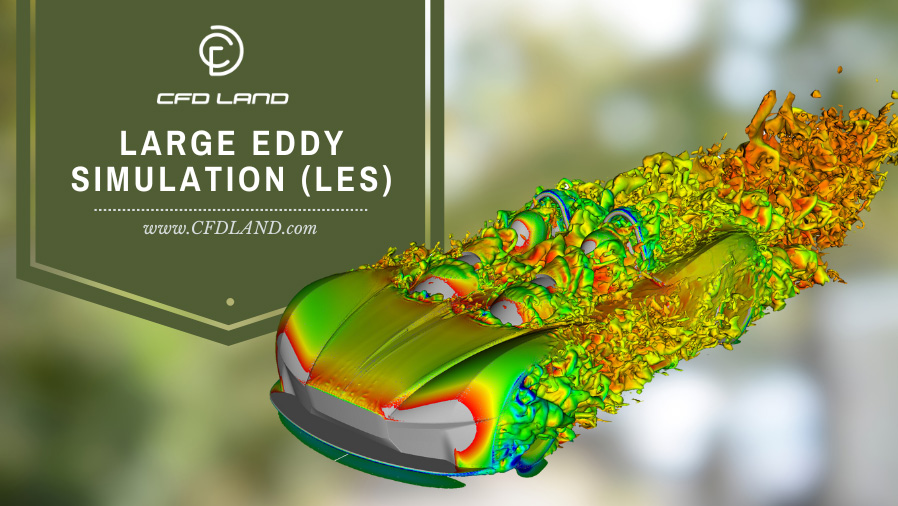
Figure 2: A LES simulation performed by ANSYS Fluent
Multiphase and Heat Transfer
The ANSYS Fluent multiphase flow capabilities handle complex interactions between different phases. Similarly, ANSYS Fluent heat transfer features cover:
- Conduction, convection, and radiation
- Conjugate heat transfer
- Phase change and boiling
- Species transport and reactions
User-Friendly Post-Processing
Finally, ANSYS Fluent post processing makes results easy to understand. Engineers can create:
- Colorful contour plots
- Streamlines and pathlines
- Animations of flow behavior
- Detailed reports and graphs
Best of all, ANSYS Fluent user defined functions (UDF) allow customization for specific needs. This means you can extend the software’s capabilities to solve unique problems.

Figure 3: ANSYS Fluent is designed to be very user-friendly. On the left side of the main screen, the required simulation settings are arranged step by step, which the user adjust in order.
ANSYS Fluent Applications
Where do engineers use ANSYS Fluent? The answer is everywhere! The ANSYS Fluent software serves countless industries because fluent CFD can simulate any fluid behavior. Let’s explore the diverse ANSYS Fluent applications and see why this fluent program dominates every sector.
Aerospace Engineering Excellence with ANSYS Fluent
First and foremost, ANSYS Fluent aerospace applications revolutionize flight. The fluent software helps engineers understand fluent mechanics in aviation. Specifically, ANSYS Fluent simulation calculates:
- External aerodynamics around aircraft wings
- Jet engine combustion modeling
- Spacecraft thermal protection
- Helicopter rotor dynamics
- Turbomachinery performance in engines
In fact, NASA uses ANSYS Fluent CFD for space missions. Moreover, Formula 1 teams rely on fluent CFD software to gain competitive advantages. Want to master ANSYS Fluent aerospace applications? Check out our specialized Aerospace & Aerodynamics CFD Simulation tutorials to learn from real projects.
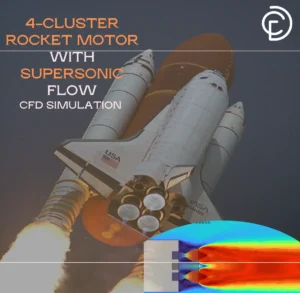

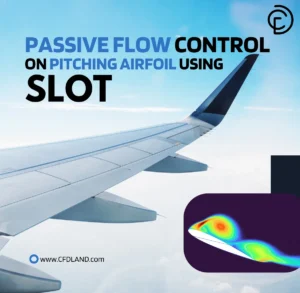
Figure 5: Numerous application of ANSYS Fluent in Aerospace industry
Automotive Industry Innovation
Similarly, ANSYS Fluent automotive transforms vehicle design. The fluent program finite element capabilities help engineers optimize:
- Car body external aerodynamics
- Engine heat transfer and cooling
- Cabin HVAC comfort systems
- Fuel injection and combustion
- Exhaust emission control
Furthermore, ANSYS Fluent simulation software reduces wind noise and improves fuel efficiency. Electric vehicle manufacturers use fluent mechanics to design better battery cooling systems.
HVAC and Building Comfort
Moreover, ANSYS Fluent HVAC applications create comfortable environments. The ANSYS Fluent software simulates:
- Indoor air quality and ventilation
- Temperature distribution in rooms
- Natural convection and forced convection
- Data center cooling systems
- Clean room particle control
Additionally, fluent CFD helps achieve energy efficiency in buildings. Architects use ANSYS Fluent capabilities to design sustainable spaces. Explore our comprehensive HVAC CFD Simulation projects to see real-world applications.
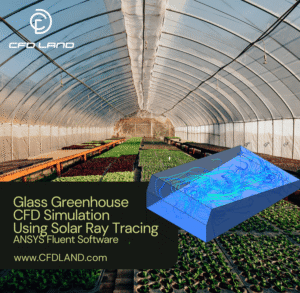
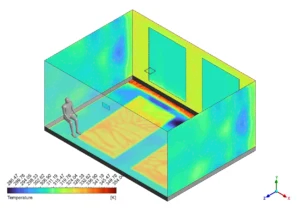


Figure 6: Wide range of ANSYS Fluent application in HVAC & Ventilation Analysis
Electronics Cooling Solutions
Furthermore, ANSYS Fluent electronics cooling prevents device failures. The fluent software analyzes:
- CPU and GPU heat transfer
- LED thermal management
- Power electronics cooling
- Battery pack temperature control
- PCB thermal design
Consequently, ANSYS Fluent simulation ensures your smartphone doesn’t overheat during gaming.
Biomedical Engineering Breakthroughs
Additionally, ANSYS Fluent biomedical applications save lives daily. The fluent program simulates:
- Blood flow through arteries and stents
- Drug delivery in human body
- Respiratory airflow patterns
- Artificial heart valve performance
- Medical device sterilization
Moreover, surgeons use ANSYS Fluent CFD to plan complex operations. Discover advanced Biomedical Engineering CFD tutorials for healthcare innovations.



Figure 7: Medical advances in biomedical engineering by means of ANSYS Fluent
Chemical and Process Excellence
Finally, ANSYS Fluent chemical processing optimizes industrial operations. The fluent CFD software handles:
- Multiphase flow in reactors
- Mixing and separation processes
- Combustion modeling in furnaces
- Heat exchanger design
- Pollution control systems
The ANSYS Fluent solver manages complex chemical reactions while the ANSYS Fluent post processing tools visualize results clearly. Therefore, industries trust ANSYS Fluent for critical process design.
Best of all, ANSYS Fluent workflow remains consistent across all applications. Whether you’re studying ANSYS Fluent turbulence models for aircraft or using ANSYS Fluent meshing for biomedical devices, the fluent program provides reliable results.
ANSYS Fluent vs Other CFD Software
How does ANSYS Fluent compare to other CFD software? This is a common question among engineers choosing their CFD simulation tool.
ANSYS Fluent competes with several major CFD programs:
- ANSYS CFX – Another ANSYS product with different strengths
- OpenFOAM – The popular open-source alternative
- STAR-CCM+ – Siemens’ comprehensive CFD platform
- COMSOL – Multiphysics software with CFD capabilities
While all these fluent alternatives have their merits, ANSYS Fluent remains the most widely-used commercial CFD software globally. Why? Because the fluent program offers the best balance of accuracy, features, and support.
Want detailed comparisons? We’ve created comprehensive guides:
- ANSYS Fluent vs CFX – Which ANSYS tool fits your needs?
- ANSYS Fluent vs STAR-CCM+ – Comparing two industry leaders
- ANSYS Fluent vs COMSOL – CFD specialist versus multiphysics platform
These in-depth analyses will help you make the right choice for your CFD simulation needs.
How to Use ANSYS Fluent?
Learning how to use ANSYS Fluent requires understanding the basic ANSYS Fluent workflow. The fluent software follows five main steps: geometry creation, meshing, setup, solving, and post-processing.
However, mastering ANSYS Fluent involves much more than knowing these steps. You need to understand:
- Solver settings and convergence criteria
- Boundary conditions setup
- Turbulence models selection
- Mesh quality requirements
- Parallel processing optimization
Good news! We’ve created a comprehensive guide that covers everything. Check our detailed How to Use ANSYS Fluent tutorial for step-by-step instructions.
Learning ANSYS Fluent
Moreover, the fastest way to learn fluent CFD is through hands-on practice. That’s why we offer FREE ANSYS Fluent Tutorials with:
- Real engineering projects
- Complete ANSYS Fluent files
- Video demonstrations
- Detailed explanations
These free resources help you master ANSYS Fluent through practical examples rather than just theory. Whether you’re a beginner or advancing your CFD simulation skills, our tutorials provide the best learning experience.
Start with our free tutorials today and accelerate your ANSYS Fluent journey!
Advantages and Limitations of ANSYS Fluent
Let’s explore the ANSYS Fluent advantages and disadvantages to help you make informed decisions about using this CFD software.
Advantages of ANSYS Fluent
First and foremost, ANSYS Fluent offers numerous benefits:
1. Industry-Leading Accuracy The fluent solver provides validated results trusted by NASA and Formula 1 teams. Moreover, extensive turbulence models ensure accurate predictions.
2. Comprehensive Physics Furthermore, ANSYS Fluent capabilities cover all fluid phenomena:
- Multiphase flow modeling
- Heat transfer simulation
- Combustion analysis
- Chemical reactions
- Turbomachinery design
3. User-Friendly Interface Additionally, the fluent software interface makes CFD simulation accessible. Even beginners can start with basic projects quickly.
4. Excellent Support Best of all, ANSYS Fluent provides:
- Professional technical support
- Extensive documentation
- Regular software updates
- Global user community
5. Integration Benefits Finally, ANSYS Fluent integrates seamlessly with other ANSYS tools, creating a complete simulation environment.
Limitations of ANSYS Fluent
However, ANSYS Fluent has some drawbacks:
1. High Cost First, ANSYS Fluent pricing can be expensive for small companies. The fluent license costs thousands of dollars annually.
2. Steep Learning Curve Moreover, mastering advanced ANSYS Fluent features takes considerable time and practice.
3. Hardware Requirements Additionally, complex 3D CFD simulations need powerful computers with high RAM and multiple CPU cores.
4. License Restrictions Furthermore, ANSYS Fluent student versions have limitations on mesh size and parallel processing capabilities.
Despite these limitations, ANSYS Fluent remains the gold standard for commercial CFD. The advantages far outweigh the disadvantages for serious engineering work.
Conclusion
In conclusion, ANSYS Fluent stands as the world’s leading CFD simulation software for excellent reasons. Throughout this guide, we’ve explored what makes this fluent software essential for modern engineering. First, we learned that ANSYS Fluent is comprehensive computational fluid dynamics software that simulates any fluid behavior. Moreover, its advanced solver capabilities, extensive turbulence models, and powerful post-processing tools make it indispensable for engineers worldwide.
Furthermore, ANSYS Fluent applications span every industry – from aerospace and automotive to HVAC and biomedical engineering. The fluent program handles everything from simple pipe flow to complex multiphase reactions. Additionally, features like parallel processing and user-defined functions (UDF) provide unlimited possibilities.
Most importantly, while ANSYS Fluent alternatives exist, none match its combination of accuracy, features, and support. Yes, the ANSYS Fluent price might be high, but the investment pays off through better designs and reduced prototyping costs.
We at CFDLAND have done many projects using ANSYS Fluent. Our CFD experts are fully proficient in using ANSYS Fluent. With confidence in the quality of our work, order ANSYS Fluent CFD Projects to CFDLAND. Remember, every CFD expert started as a beginner. With ANSYS Fluent and our comprehensive resources, you’re already on the path to becoming a computational fluid dynamics professional. The future of engineering design awaits – powered by ANSYS Fluent!
Related Blogs
Expand your ANSYS Fluent knowledge with these essential resources:
• What is Computational Fluid Dynamics (CFD)? – Discover the fundamentals of CFD science and mathematics that power ANSYS Fluent simulations.
• CFD Applications – Explore diverse real-world CFD simulation uses across industries beyond what fluent software offers.
• ANSYS System Requirements – Learn the exact hardware specifications needed to run ANSYS Fluent efficiently on your computer.
• How to Use GPU in ANSYS Fluent – Accelerate your fluent solver calculations dramatically using GPU parallel processing technology.
These comprehensive guides complement your ANSYS Fluent learning journey and help you become a CFD expert faster!

